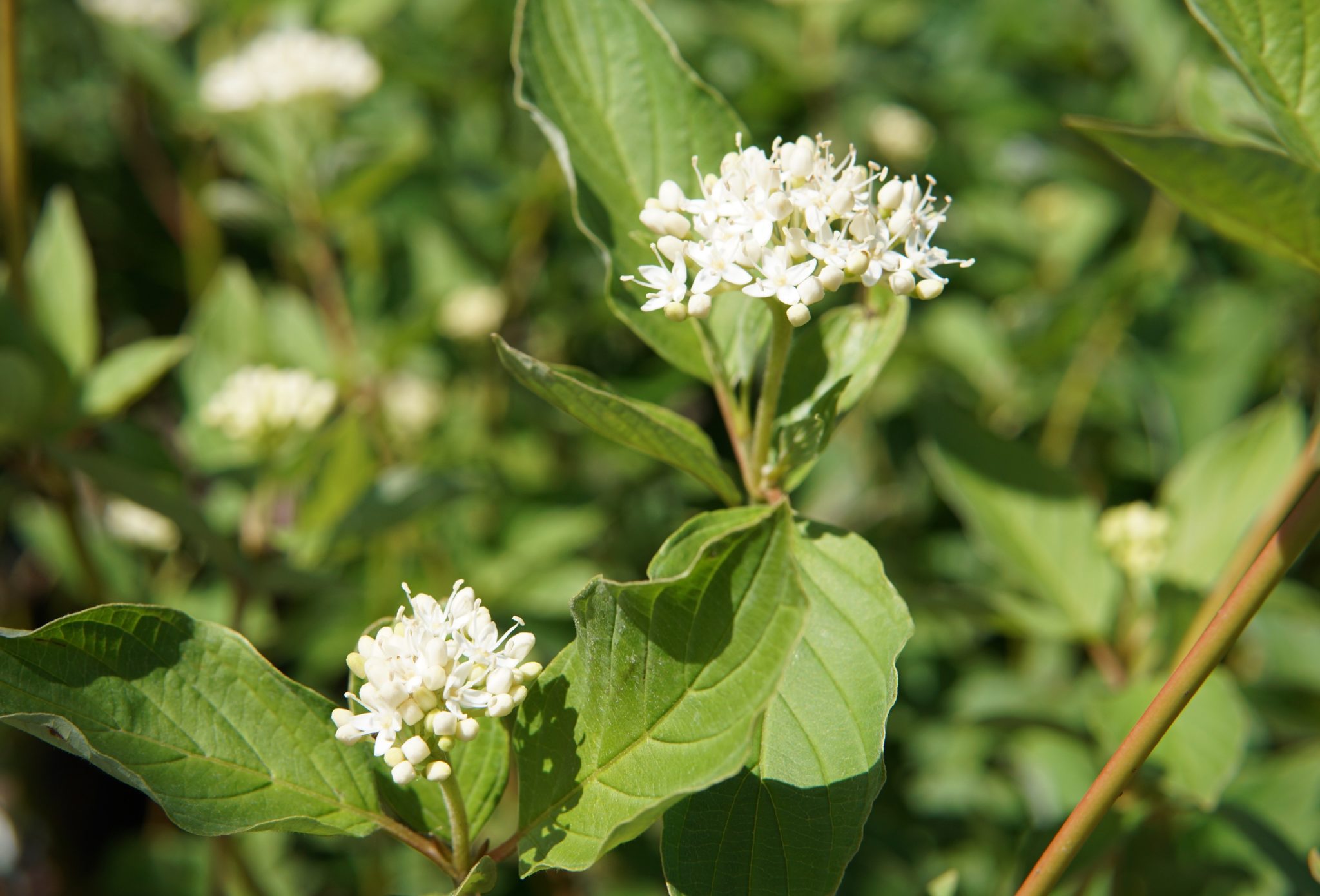

Forms a thicket by spreading along the ground, so allow plenty of space. (That being said, it is also known to be tolerant of drier to more normal garden moisture conditions, especially if given some shade.)įor optimal red twig color, prune out old wood in early spring to encourage fresh growth. Cornus sericea Cardinal Red Twig Dogwood features lush medium green foliage and small clusters of white flowers during Spring and Summer. Much prefers moist to wet conditions, can tolerate seasonal flooding.
Red twig dogwood flowers full#
Leaves turn red in the fall, bare red branches providing colorful contrast in winter.Ĭulture: Full sun to shade (performs better with at least some sun). Opposite, oval/ovate leaves clusters of small white flowers, followed by white to bluish berries favored by birds. Native Range: Low to mid-elevations throughout most of North America, along streams, in floodplains and boggy areas, moist to wet woodlands.Ĭharacteristics: Multi-stemmed shrub 3-15’ tall and wide, spreading by horizontal branches at the base rooting at points of contact with the ground thicket-forming, with newest branches the bright red that is its main feature. Photo by Greg RabournĬommon: Red Twig Dogwood, Red Osier Dogwood

Green oval leaves have irregular white edges. Red osier, or red twig, dogwood, on the other hand, are the shrubs with vibrant twigs. If you don’t want it to spread as readily, keep it in a partially shady spot with more “normal” garden water and prune out the rooting horizontal branches. Plant Description: Large, vigorous shrub with dark red branches and twigs. Flowering dogwoods make fine small deciduous trees, with showy pink or white flowers and fiery, yellow or crimson autumn leaf color. It also provides a quickly-established hedgerow and potential screening plant. This ability, along with its berries, make it an excellent habitat plant for birds, providing both food and shelter. The dogwoods are distinguished from other flowering shrubs by the clusters of small, 4-petaled white flowers and opposite (except for 1 species) leaves that are. Horizontal stems at the base of the plant root when nodes come into contact with the ground, and form a thicket. Mid-spring to summer finds this shrub in bloom – frothy white clusters of tiny flowers ride the ends of the branches, giving way to white or bluish white berry-like fruits that are not particularly appetizing to the human palate, but that will draw birds to your garden in numbers, and are also a striking contrast to the stems and the foliage – which in the fall, turns various shades of red to red-orange, making it a blaze of color.

The outstanding red winter stem color that gives this plant its name and distinct beauty is only one, albeit the most dramatic, of its virtues it is, in fact, a plant with four-season interest and great wildlife value. stolonifera, our native Red Osier or Red Twig Dogwood is one of our most beautiful shrubs and is ideal for the wetter parts of your garden.


 0 kommentar(er)
0 kommentar(er)
